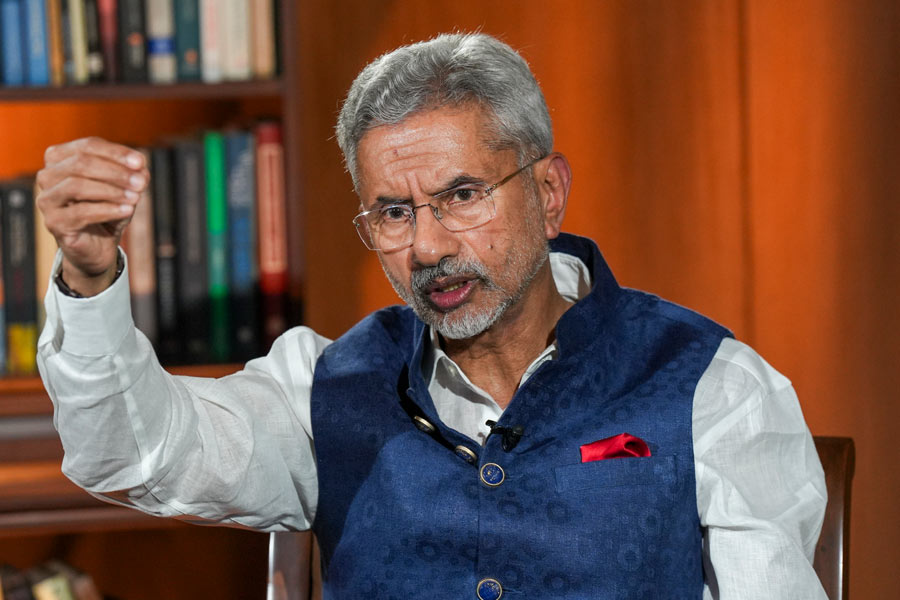|
|
Manmohan Singh and the United Progressive Alliance seem to have given their second innings a Sehwag-like start. Pratibha Patil’s address to the Lok Sabha lays down an extremely impressive and ambitious agenda for the next five years, even setting targets for the first 100 days in power. While there is something for everyone, the overriding emphasis is the mantra of inclusive growth with a slew of programmes and promises aimed at the poor.
The national rural employment guarantee scheme has been among the most important pieces of legislation aimed at improving the lives of the poor. It is premature to speculate on the part it has played in ensuring victory for the UPA in the last election. But, either by conviction or cynical design, the UPA government has decided to continue along the same route by promising a large number of schemes in the social sectors. The most important among these is the promise to draft a new food security act that will ensure families below the poverty line a minimum guaranteed amount of 25 kg of foodgrain per month at Rs 3 per kg. The benefits from the successful implementation of this act cannot be overestimated — acute hunger and malnutrition will be a thing of the past.
Of course, there may be more than one view about what is an appropriate delivery mechanism. One option is to persist with the current public distribution system. However, if the government decides to follow this route, then it will have to strengthen the PDS quite appreciably because the coverage of the PDS is very patchy in several states. Many people may object with some justification that this would be a retrograde step. The Food Corporation of India, which is an integral part of the PDS, is among the more inefficient organizations in the country. Not surprisingly, the costs of the PDS far exceed the costs associated with private distribution channels.
An alternative delivery mechanism is the system of “food stamps”, which is used in several countries. The government can issue coupons to the BPL families, which they can then redeem for foodgrains at any shop, public or private. This would result in reducing the dependence on the fair price shops, and so eliminate the need to expand the coverage of the PDS. Of course, the system of food stamps is not foolproof. Families can lose coupons and hence their food entitlement at least temporarily. And the FCI cannot be dispensed with completely since the government would still have to hold adequate stocks of foodgrain reserves as an insurance against unexpected contingencies.
The government also has very ambitious plans for the education sector. Its plans include a new Madhyamik Shiksha Abhiyan to provide for universal secondary education. The president also announced that the government proposes to implement a “brain gain” policy so as to induce scholars from abroad to come back to India. The grand objective is to set up 14 brand new innovation universities, which can compete with the best educational institutes across the world. Unfortunately, the setting up of world-class universities requires much more than the construction of campuses and the creation of catchy phrases like “brain gain”.
In spite of the recent pay commission awards, the gap between university salaries in India and abroad remains huge. The disparity in other facilities is even bigger. For instance, the institution that I am associated with in India is relatively well funded by Indian standards. And yet, it can only fund 50 per cent of international air fares once every three years to its faculty to attend scientific conferences. Why should young scholars who obtain faculty positions in good universities abroad want to return?
Apart from its social sector programmes, the government also proposes to dramatically increase spending on infrastructure. Specific areas that will attract attention are highways, power, airports and a rural telecommunication network. Of course, no one can object to these policy initiatives. Projects in these areas typically generate relatively large benefits in terms of employment generation. The woefully inadequate state of our infrastructure also means that this sector acts as a severe constraint on growth prospects. Against the backdrop of the continuing global slowdown, it is imperative that the stimulus to the Indian economy comes from within, and there is no better way of doing it other than fresh investment in infrastructure.
The new programmes in the social sectors along with infrastructural investment will require significant financial resources. How will the government raise these resources? Of course, the president’s speech to Parliament is not the best source for finding answers to such questions. While the budget, which is less than a month away, will undoubtedly yield some definitive clues, it is almost certain that the government will attempt to collect some resources through disinvestment of government holdings in public sector enterprises.
However, for at least two reasons, a relatively small fraction of the necessary funds will be generated through this route. First, this is not really a good time to sell off assets since the Indian stock market is yet to reach the dizzy heights that it had reached before the effects of the global downturn reached Indian shores. Second, the government has decided to retain majority shareholding in all the public sector enterprises. This is likely to depress the prices at which public sector shares can be sold since potential buyers cannot get operational control.
It is inevitable that the new programmes in the social sectors will tend to increase the size of the government in the economy. After all, the private sector is hardly likely to invest in rural health care. Proponents of a “leaner” government would have hoped that the pro-reformers in the government would have pushed for some compensatory changes in the form of a greater degree of disinvestment in at least sectors like hotels — this is a sector that has absolutely no strategic importance.
Fortunately, the pro-reformers need not go into deep depression — at least not yet. The president’s speech does contain some promises of reform. Amongst the most important of these is the intent to reform the higher education sector along the lines suggested by the Knowledge Commission. Public- private partnerships in getting the new programmes in the infrastructure sector off the ground are sought to be encouraged through the adoption of a more investor-friendly approach. A major tax reform exercise has also been promised in the form of the implementation of a uniform goods and service tax. The corporate sector must have hoped for more. Perhaps, these will only come after a period of consolidation.











